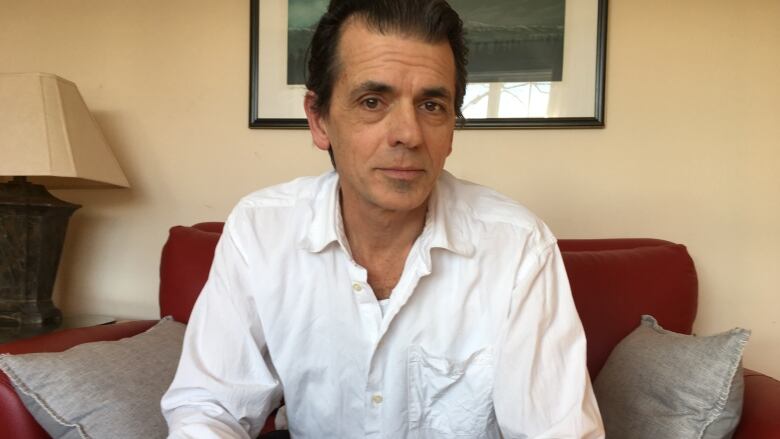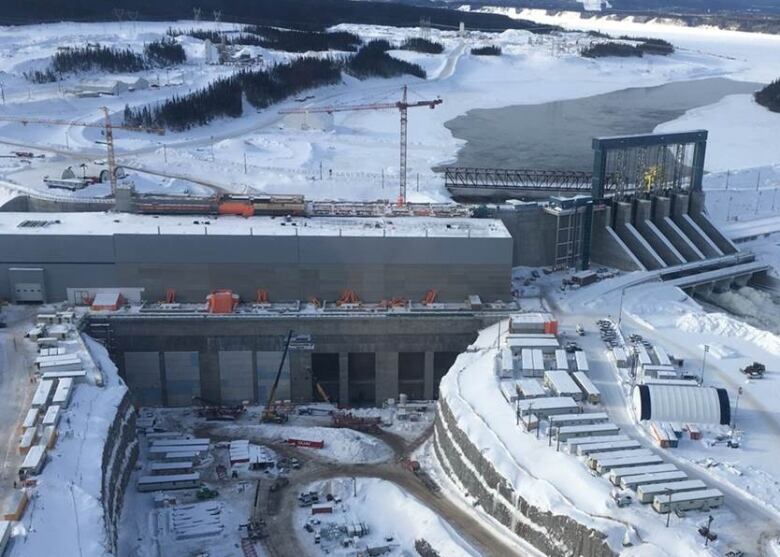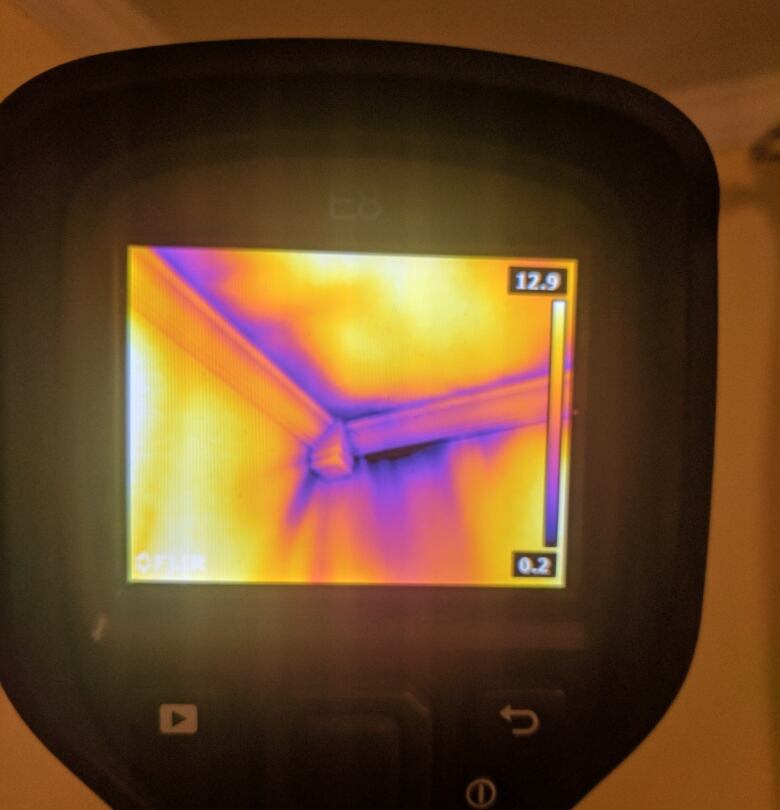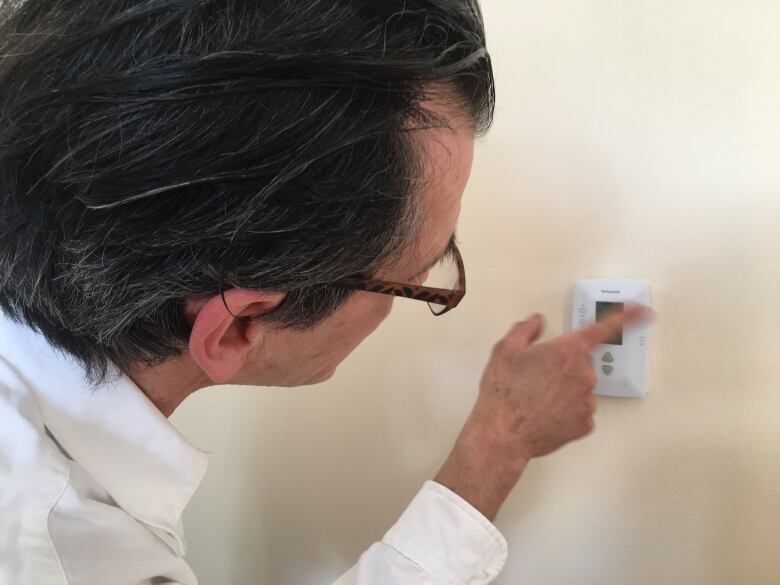Hack the Heat: How you can take back the power before Muskrat Falls
You may not like what's going to happen to your power bill, but there are things you can do in advance

Keeping the heat in our homes and the wind out is a challenge in Newfoundland and Labrador. If you heat your home with electricity, you are likely paying around $3,000 or more annually with as much as60 per cent, or $1,800 of that, for space heating alone.
That cost will double in two years when power from Muskrat Falls comes on stream.
That just doesn't seem right.
But what can the average homeowner do to make her or his protest heard?
Sure, you can use less electricity or switch to other sources. But that meanssitting around in a blanket or big lifestyle changes like lugging firewood into the house and burning your knuckles. Doesn't it?

Not necessarily. In fact, there's plenty you can do without sacrificing comfort or lifestyle.
Depending on the energy efficiency of your home, you could cut your electricity bill by 50 per cent or more. Together with other ratepayers in the province, you could help reduce residential electrical demand by 0.60 terawatt hours a year or 12 per cent of Muskrat Falls' annual output of 4.9 terawatt hours.
If the average home uses 27,000 kWh and if 50,000 homes in the province reduced consumption by half, then that would be equivalent to removing 25,000 homes from the grid!
That might make someone sit up and listen.
So, where to start?
In the average home, space heat is 50 to 60 per centor more of the electricity bill.
Brad Dunn, one of two federally certified residential energy auditors in this province, says homeowners could save money with a few simple and cost-effective steps. In some cases, he's seen homeowners cut the cost of home heating by 60per cent.

But how do you identify the best heat-saving measures and the order in which to do them, and then estimate the cost for each and the approximate savings?
To do it in a strategic way, Dunn recommends an energy audit.
There is also an app for that. Well, a software program really.
HOT2000 is available from Natural Resources Canada, and anyone can download it.
There's a hitch, though: you need to be federally certified professional in residential construction, like Randy Oram, to have full access.
Oram offered to run HOT2000 calculations for an average-sized home on some of the energy retrofits that Dun had suggested.
Some drafty
Oram and Dunn agree that the first step is making your home as air tight as possible. "Air leakage can account for 65 per centof home heating costs in some houses," said Dunn.
In newer houses the internal air is replaced by external air 2.5 times an hour. In high-tech "passive" homes that exchange rate is 0.27 times an hour.
"At those rates you need ventilation to get rid of moisture,"said Oram.
But in older homes the exchange rate is 4.5 times an hour or more.
Using Hot2000, Oram calculated that every two new air exchangeswill add 2,350 kilowatt hours (kWh) a year in the average home. At today's 11 cents per kWh, that equals $260 a year.
Post Muskrat Falls,that willcost you $520 every year.
But there are easy steps you can take to save.
Air exchange happens around windows, doors, attic hatches, crown moulding, and electrical outlets in the outer walls.
Just by sealing electrical boxes on the exterior walls with inexpensive foam plates, Oram estimates that the homeowner could save 275 kWh or $60 a year, every year after Muskrat Falls.
Dunn also recommends weather stripping doors, caulking along crown moulding and door and window trim. Dunn said thermal imaging, even in energy efficient homes, often detects cool spots along the top trima place often neglected because it is out of sight.
Haul up your socks
"Attic insulation is a must," said Dunn, who recommended R-50 insulation.
Oram agrees. "If you don't have 16 inches of insulation in your attic, hire professionals to top it up," he said.

Using HOT2000,Oram estimated that increasing attic insulation from the old code of R-32 (~10 inches) to R-50 would cost $360 (60 cents per square foot) and save $43 a year. On top of that there is a rebate for 50 per centof the cost from takeCHARGE, the energy conservation program sponsored by Newfoundland Power and Newfoundland and Labrador Hydro.
They also offer a rebate for upgrading basement insulation.
Oram estimated a cost of $4,500 to insulate unfinished basement walls to R-20 and add 2x4studded drywall as per code.
"But you could save $700 a year now in heating costs, and the rebate of up to $1,000 helps make it more affordable.," he said
You can also piggy-back energy upgrades on home maintenance projects.
For example, I re-sidedmy house this November and for an additional $2,000 added a half inch of extruded insulation to the exterior. I saved $100 on my December heating bill and $60 in January. Plus my house feels warmer. (Here is some more information on the Insulation program and the rebates.)
Turn to the tech
When your house is sealed and insulated, it's time to update heating technology.
Start with programmable thermostats.
When you program them, remember that a setback of fivedegrees saves 10 per centon heating costs.

Dropping the temperature from 21 Cto 16 C from 10 p.m.to 6 a.m.and again from 10:00 a.m.to 2:00 p.m.will save 10 per centover that 12 hour period or half of every heating day. (Ten per centfrom half your heating bill is five per centof the entire $1,800 heat bill for a saving of $90 a year, or $180 after Muskrat Falls.)
Heat pumps on the other hand can save a great deal more moneyup to 40 to 50 per centof your current heating bill but they also cost more to install.
The model that is best suited to existing homes is the minisplit ductless heat pump.
Getting the right size and capacity of heat pump for your home is critical to the success of this technology. So it is important to have a qualified contractor to assess your home and install the proper model.
Savings can add up
Here are some modifications you can make to your home. The figuresalso reflect potential rebates through the takeCharge program.
| Item | Cost (pre-tax) | Potential rebate | Cost (after rebate) | Annual kWhssaved |
| Basement wall insulation R-20 | $950* | $712 | $238 | 4,264 |
| Attic insulation R-50 (full) | $1,106 | $553 | $553 | 2,273 |
| Attic insulation R-50 (top up) | $360 | $180 | $180 | 391 |
| Perimeter wall outlet & switch insulators** | $12 | $1 | $11 | 275 |
| Programmable thermostat | $50 | $10 | $40 | 818 |
| Mini-split ductless heat pump | $3,800 | Low interest loans from utility | 5,910 | |
| Total per home | $5,172 | $903 | $4,345 | 11,658 |
* Excludes cost of other construction materials. ** Two packs x 24. *** Total excludes full attic insulation
The amounts saved before and after Muskrat Falls comes online are considerably different. For instance, wall insulation before Muskrat Falls will save $469 a year, and can be paid back in six months. After Muskrat Falls, savings are $938 annually, with a payback period of three months.
Here are other annual savings:
- Attic insulation (full): $250 in savings before Muskrat Falls, $500 after. Payback periods are 26 months before Muskrat Falls and 13 months after.
- Attic insulation (top up): $43 before, $86 after. Payback periods: 48 months before and 24 months after.
- Perimeter wall outlet: $30 before, $60 after. Payback periods: Four months before, two months after.
- Programmable thermostat: $90 before, $180 after. Payback periods: six months before, three months after.
- Mini-split ductless heat pump: $650 before, $1,300 after. Payback periods: 71 months before, 35 months after.
Further reading
There are plenty of online resources that can help you. Here are some I have found helpful.
How can I make my home more energy-efficient? A list of suggestions from Natural Resources Canada.
Planning energy efficiency renovations for your home: Before you hire anyone, do some research on what options the consumer has, and what questions you should put to a contractor.
Keep the Heat In: Download a copy of this guide from the federal government, or browse its chapters online.
Corrections
- Due to an editing error, a prior version of this story incorrectly referred to two air exchangers adding 2,350 kilowatt hours to the average home. The sentence should refer to two air exchanges.Mar 17, 2018 11:47 AM NT












_(720p).jpg)


 OFFICIAL HD MUSIC VIDEO.jpg)
.jpg)



























































































